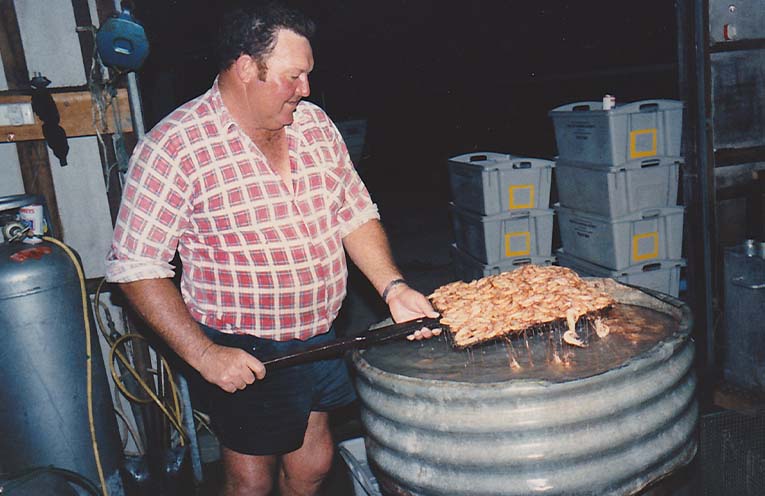
THIS is the first part of a series on master fisherman Jimmy Chalkley.
MY wife Ella and I arrived in Nelson Bay in 1974.
After settling in to our home in Fingal Bay I regularly dropped into the Country Club Hotel for a beer or two.
It was in the ‘CC’ that I met all the old commercial fishermen who had their own seat ‘reserved’.
No one would be brave enough to sit on a stool that was used by Glen Tarrant, Bob McLean or Jim Chalkley.
For years I ran a weekly frozen chook raffle in the CC for the Nelson Bay Rugby Club, which Ella and I started in 1978.
On one occasion Jimmy walked into the front bar of the pub with a fish box half full of cooked lobsters.
“There Johnny, run a decent raffle,” he said.
Jim then bought tickets off me to win the lobsters that he had just donated.
One time he did win the lobster which he immediately gave back.
I have so many stories to tell over those years, mainly told to me by the old fishermen.
All who knew him would agree that Jimmy Chalkley was a champion fisherman and a great bloke.
For the following weeks I have submitted an extensive interview I conducted with Jim back in 2012 for a book that I was writing called ‘Old Salt’, which has since sold out and is unavailable.
Jimmy Chalkley was born in Cessnock in 1944, a fisherman all his life.
Jim’s knowledge of the sea and everything in it is nothing short of remarkable.
It’s little wonder as the lad had fishing in his blood.
“My great grandfather, on mum’s side of the family, Bill Asquith, supposedly, I’ve been told, was the first white fisherman in the Port,” Jim recalled.
“He went opposite the Chinamen who had set up a small business of catching and preserving fish way back in the mid-1800’s.”
As the small communities developed in Port Stephens, just about everything revolved around working the oysters or catching fish, and catching fish was something that young Jim was becoming very good at.
Kingfish – thumpers – had gathered under the old wharf at Nelson Bay.
The big fish swimming among the pylons knew that they were safe from capture, but what they didn’t realise was that a local kid of around fourteen was planning a way to pull them out.
“(I) saved up and saved up and saved up to buy a reel to rig onto a rod so that I could catch those huge kingfish that were in the shadows under the old jetty.
“We saw more than we caught, some fish were as big as 30 – 40 kg, right under our feet.
“Bill Smithers made me the rod out of a Rangoon blank, the tip was as fat as your thumb and I ran 80lb line on my brand new Pflueger reel.
“The big aluminium Fluger, with a centre pin spool, had a gearbox with the drag and everything in there.
“The plan was to catch a live yellowtail, which were swimming under the wharf, then when I did, stick the hook through him and dangle him just so his head was in the water.
“An old Greek bloke on the wharf knew how to fire the kingfish up by frothing all the water up with the tip of his rod.
“As soon as he did, the kingies took an immediate interest and came out from underneath the wharf.
“It’s the same principle they use to handline the tuna.
“The kingies were so excited that they leapt out of the water to swallow my yellowtail.
“When the giant kingfish realised it had been tricked, it took off like a speed boat straight across the Port towards Tea Gardens.
“The reel screamed as the line stripped off.
“Just holding on took all my strength.
“There was no way I would let go because it took so long to save the money.”
Over time Jim landed a dozen or so monster kingies, it was more about the challenge.
It’s fascinating to me, because as I write these words the kingfish regularly swim along the Nelson Bay breakwall, very close to the same spot that they frequented 50 years ago.
By John ‘Stinker’ CLARKE
